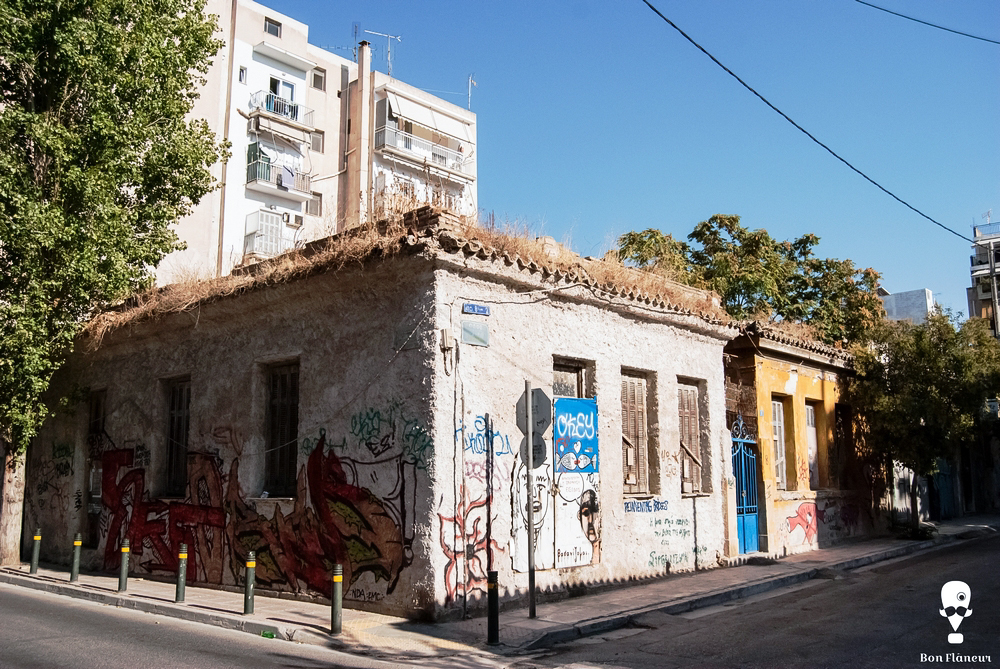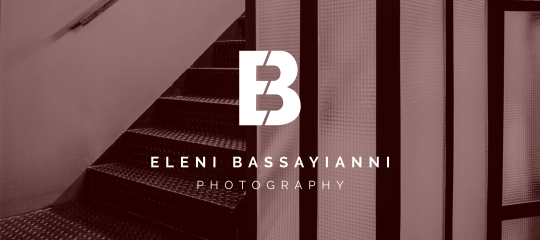Metaxourgio, Keramikos, Gkazochori
Metaxourgio, Keramikos, Gkazochori, three neighbourhoods with many things in common and many differences.
Home > Athens > Society > Metaxourgio, Keramikos, Gkazochori






















What I can see
Metaxourgio, with its rich social history, is the site of a former silk factory. Today, it houses the Municipal Gallery at Avdi Square. Keramikos is the homonymous neighbourhood of the archaeological site of Keramikos, where we can see “Dimosio Sima” (cemetery of eminent ancient Athenians) as well as Gkazochori, the area of the former gas factory (Gkazi, 1861-1983) which today hosts Technopolis (1999) and the municipal radio station. Gkazochori, or Gkazi, is among the most popular nightlife hubs in the city. For decades, Keramikos and Metaxourgio had been somewhat depressed areas, the latter being home to many brothels and an area frequented by injecting drug users. In Gkazochori, the majority of the old inhabitants are Muslim internal migrants from the region of Thrace, who migrated here to work in the factory. To this day, one can hear Turkish music coming out of homes and shops when passing through the neighbourhood. On the south side of Gkazochori, there are Roma residents, descendants of the so-called “Turkish Gypsies” (Tourkoyiftoi), who in the early 19th century lived in Psirri and were gradually displaced. In Keramikos and especially in Metaxourgio, inward migration still happens today. The entire Keramikos area used to be a centre for internal migration, whose traces are present to this day, and external today, which is traced not only in its foreign residents, but also in the bus stations with buses to Balkan countries, around Karaiskaki Square. The most predominant ethnic groups are Chinese, Bangladeshis, Pakistanis, Albanians and immigrants from Arab countries. Even though the distance between Metaxourgio and Gkazochori is small, the differences in atmosphere and social stratification between the two areas –as well as in the Keramikos neighbourhood in between– are obvious. The graffiti is a reflection of this diversity and in Metaxourgio particularly it can be intensely political, especially from far right and anti-authoritarian groups, while in Keramikos and Gkazochori one finds mainly artistic graffiti and tags. Moreover, the type of entertainment is much milder in Metaxourgio and Keramikos, than in Gazochori.
What I can't see
The area became part of the productive core of the city and its subsequent division into “elite” and “folk” areas. It reflected Athens’ social mobility, which was enhanced by migration, where the children of former workers became the new bourgeoisie. Its character was shaped by a combination of opposing trends, both on a socio-economic and an urban-planning level, a fact that gives these neighbourhoods their distinct character. Metaxourgio has been identified in the past with rich artistic activity, mainly in the entertainment of the working classes, and has seen some bloody clashes between supporters of rival political parties (Diligiannians-Trikoupians). During the German Occupation, it was mercilessly bombed for being a powerful pole of resistance against the Nazis. As the region’s main labour centre, it has become a base for protests, while during the December events of 1944 (Dekemvriana) saw violent upheaval and many local houses were destroyed. Prior to the construction of the subway station (2007), Gkazochori was primarily an area with entertainment venues frequented by LGBTQI Athenians, with only a few alternatives. Today, and although there are still many LGBTQI venues, they are not the majority. Despite the fact that there have been homophobic incidents here, mainstream “straight” culture coexists with gay culture without major problems. In recent years, the area has been rapidly growing as part of an urban “gentrification” movement.
Bibliography
Aggelidis V. (1992), Μεταξουργείο- Κολωνός, Νοσταλγία και πραγματικότητα, [Metaxourgio- Kolonos, Nostalgia and reality], Athens: Filippoti
Agriantoni C. (d.u.), Η Αθήνα τον 19ο αιώνα. Συνοικία Μεταξουργείο, [Athens in the 19th century. Metaxoyrgio neighbourhood], in Archaeology of the city of Athens,
http://www.eie.gr/archaeologia/gr/chapter_more_10.aspx
Last visit 28/8/2011
Agriantoni H., (1995), Σηρική εταιρεία της Ελλάδος: πρόσαρμογή και αφομοίωση μιας μεγάλης βιομηχανικής επιχείρησης, [Silk company of Greece: adaptation and assimilation of a big indrustrial enterprise] in Agriantoni C.- Hatzioannou M.H.. (eds), (1995), το Μεταξουργείο της Αθήνας, [Metaxourgio of Athens], Centre of Hellenic Research, National Research Foundation, Athens
Agriantoni C., (1995), Συνοικία Μεταξουργείο, [Metaxourgio Neighbourhood], in Agriantoni C.- Hatzioannou M.H.. (eds), (1995), το Μεταξουργείο της Αθήνας, [Metaxourgio of Athens], Centre of Hellenic Research, National Research Foundation, Athens
Agriantoni C.- Hatzioannou M.H.. (eds), (1995), το Μεταξουργείο της Αθήνας, [Metaxourgio of Athens], Centre of Hellenic Research, National Research Foundation, Athens
Lefas P. (1985), Αθήνα, μια πρωτεύουσα της Ευρώπης, μια σύντομη εξιστόρηση της εξέλιξης της Αθήνας από την ανακήρυξή της σε πρωτεύουσα του Ελληνικού κράτους έως σήμερα, [ Athens, a european capital, a brief narration of Athens since its declaration as the capital of the greek state until today], Athens- Ioannina, Dodoni
Micheli L., (1990), Η Αθήνα των ανωνύμων, περιήγηση στα πλατώματα, τους μαχαλάδες και τις γειτονιές της παλιάς Αθήνας, [Athens of the anonymous, tours around tha plateaus, the mahalas and the neighbourhoods of old Athens], Dromena
Biris K. H. (1966), Αι Αθήναι από του 19ου εις τον 20ον αιώνα, [Athens from the 19th up to the 20th century], 5th edition 2005, Athens, Melissa
Papanikolaou- Christensen Α., (1995), το Μεταξουργείο της Αθήνας: από το εμπορικό κέντρο στο εργοστάσιο, [Metaxourgio of Athens: from the shopping mall to the factory], in Agriantoni C.- Hatzioannou M.H.. (eds), (1995), το Μεταξουργείο της Αθήνας, [Metaxourgio of Athens], Centre of Hellenic Research, National Research Foundation, Athens
Poulimenos G., Daniel M., Pouloudis A., (1995), Το οικοδομικό χρονικό του κτιριακού συγκροτήματος του Μεταξουργείου, [The economic chronicles of Silk Factory building complex] Agriantoni C.- Hatzioannou M.H.. (eds), (1995), το Μεταξουργείο της Αθήνας, [Metaxourgio of Athens], Centre of Hellenic Research, National Research Foundation, Athens
Ropaitou- Tsapareli Z., (2004), Ρουφ- Βοτανικός, Γκαζοχώρι, [Rouf- Votanikos, Gazohori], Athens, Filippoti
Taxiarchi P., (d.u.), Το Μεταξουργείο, Ιστορική και Πολεοδομική εξέλιξη από την αρχαιότητα ως σήμερα [Metaxourgio, Historical and Urban evolution from the antiquity until today].
Travlos I., (1993), Η πολεοδομική εξέλιξις των Αθηνών, από των προϊστορικών χρόνων μέχρι των αρχών του 19ου αιώνος, [The urban evolution of Athens, from prehistoric era until the beginning of the 19th century], Athens, 2nd ed.
SavageM., Warde A., (2005), Αστική κοινωνιολογία, καπιταλισμός και νεωτερικότητα [Urban Sociology, Capitalism and Modernity], rev. Psimmenos, Athens: I. Papazisi


Share